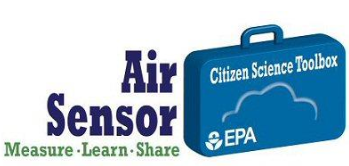Upcoming Events at EPA
By Michaela Burns
Fall is just around the corner and so are these upcoming events at EPA!
13th Annual U.S. EPA Drinking Water Workshop
Tuesday, August 23rd at 8:30 a.m.-Thursday, August 25th at 12 p.m.
EPA, in cooperation with the Association of State Drinking Water Administrators, is hosting its annual drinking water workshop to support the efforts of state and local officials to assist small systems. The 13th annual workshop will provide in-depth training and information on various solutions and strategies for handling small system problems and compliance challenges. Register now to attend.
 Adverse Outcome Pathway Knowledge Base
Adverse Outcome Pathway Knowledge Base
Thursday, August 25th at 11 a.m. ET
EPA and its partners at the Organization for Economic Cooperation and Development’s are launching a project to develop the “Adverse Outcome Pathway Knowledge Base” (AOP-KB). The AOP-KB is a combination of individually developed platforms, synchronized and orchestrated in a way that gives users the possibility to capture, review, browse, and comment on adverse outcome pathways shared by the stakeholder community. Attend this event remotely or in person at EPA’s Research Triangle Park.
Removal of Multiple Contaminants: Biological Treatment and Combined Ion Exchange
 Tuesday, August 30th at 2:00 p.m. ET
Tuesday, August 30th at 2:00 p.m. ET
In this month’s small systems webinar, Dr. Treavor Boyer from Arizona State University will give a presentation on combined ion exchange to remove dissolved organic carbon and hardness in drinking water. Nicholas Dugan from EPA’s Water Supply and Water Resources Division will then discuss capabilities of biological treatment for drinking water. Register now!
Bonus— A certificate will be offered for this webinar.
RETIGO Training Webinar
 Wednesday, August 31st at 1:00 p.m. ET
Wednesday, August 31st at 1:00 p.m. ET
Curious about EPA’s Real-Time Geospatial Data Viewer, commonly known as RETIGO? Attend this webinar to learn the basics of this interactive tool that allows users to upload field data they have collected while in motion (walking, biking, or on a vehicle) and explore it visually by plotting the data on a map and/or graph to observe air quality trends. Register for the webinar.
Systems View of Nutrient Management-Nutrient Modeling
Wednesday, August 31st at 2:00 p.m. ET
 Check out this month’s Safe and Sustainable Water Resources research program webinar! Dr. Richard Ready of Montana State University will give a presentation on how agricultural best management practices aimed at reducing nutrient and sediment loads play an important role in restoring ecosystem function in the Chesapeake Bay. Register now!
Check out this month’s Safe and Sustainable Water Resources research program webinar! Dr. Richard Ready of Montana State University will give a presentation on how agricultural best management practices aimed at reducing nutrient and sediment loads play an important role in restoring ecosystem function in the Chesapeake Bay. Register now!
For more events head on over to the EPA research event page.
About the Author: Michaela Burns is an Oak Ridge Associated Universities contractor and writer for the science communication team in EPA’s Office of Research and Development.





